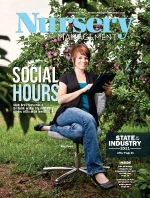|
|
Like most challenges in life the providence of nature provides us with solutions, in this case to some of our more challenging landscape problems. Ever wonder why one plant will thrive in a particular landscape setting, while right next to it another individual of the same species languishes? One of the most common reasons for this conundrum with seed-propagated plants has to do with the origin of the seed from which the plant was grown.
Plants from genetic stock originally adapted to alkaline soils may thrive better in urban sites with lots of concrete (primarily made of calcium carbonate) raising the soil pH than seedlings from genotypes of the same species which evolved in acidic soils. Trees adapted to coastal environments might stand a better chance of tolerating splash from winter road salts than individuals of the same species derived from more inland locations. Similarly, red maple trees selected from Ohio genotypes may be better adapted to cold than red maples originating from Florida. Examples of this genetic variation associated with the environment of a seedlings' geographic origin are what are often termed by breeders as provenances. However, a common misconception is that the term "provenance" is synonymous with the term "seed source," which may be a more familiar term in the nursery trade. The difference is a bit subtle, but extremely important.
Provenance vs. source
To illustrate the difference between a seedling's provenance and its seed source, let's suppose that we have a stand of native red maples growing in the wild in Ohio and we pick seeds from these trees. The seed source is Ohio (location in which the seeds were picked) and the provenance is an Ohio provenance (genetic origin of the seeds). We plant these in northern Florida, allow them to grow and produce seeds of their own and then pick them. The seeds from these Florida-grown seedlings are now a Florida seed source, but they are still an Ohio provenance since that was where the original genetic materials evolved. These plants will still contain genetic traits better adapted to Ohio than Florida. Thus, when obtaining seed for growing stock to match a given set of environmental conditions, it is critical that you obtain seed from a known genotype to capitalize on the best genetic traits for the region in which you wish to grow them. Knowing the seed source only tells us the plant survived long enough to reproduce. It tells us nothing about the environmental conditions in which its genetic constitution evolved to perform its best.
 Folks in commercial forestry have been using this important distinction to select for the best timber trees for many years, but only rarely is this distinction used in the nursery trade where many trees are bought and sold as undifferentiated commodities. Trees are not widgets which can all be interchanged genetically, even within the same species.
Folks in commercial forestry have been using this important distinction to select for the best timber trees for many years, but only rarely is this distinction used in the nursery trade where many trees are bought and sold as undifferentiated commodities. Trees are not widgets which can all be interchanged genetically, even within the same species.
Significant gains in growth rates, improved habits and tolerances to a variety of urban stresses can be easily obtained by simply choosing wisely when obtaining seeds. This is a great opportunity for local and regional nurseries to differentiate their product from that of large national suppliers. Local or regional nurseries should grow a limited number of regionally adapted provenances of a species, where it would not be practical for most large national distributors to maintain the numerous provenances necessary to ship locally adapted materials to certain regions.
Next time you pick a seed or liner supplier, think about picking one who knows the difference between provenances and seed sources and it can help you get a leg up on the competition. In our program at Texas A&M University's Department of Horticultural Sciences, we are working with other universities around the country to identify better adapted landscape plants for the nursery and landscape industries. Current research work includes development of alkaline-soil-tolerant bald cypress, new groundcovers for hot dry saline environments and low-input heat- and drought-tolerant annuals.
Michael A. Arnold is professor of Landscape Horticulture, Texas A&M University, Department of Horticultural Sciences; ma-arnold@tamu.edu.

Explore the September 2011 Issue
Check out more from this issue and find your next story to read.
Latest from Nursery Management
- John Ruter shares UGA's latest woody and herbaceous ornamental plant breeding projects
- Conor Foy joins EHR's national sales team
- Pantone announces its 2026 Color of the Year
- Syngenta granted federal registration for Trefinti nematicide/fungicide in ornamental market
- Get to know Kayela Aeppli
- HILA 2025 video highlights: John Gaydos of Proven Winners
- Q&A with Justin Bartlett
- Be the best choice






